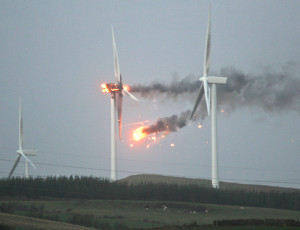
In more federal action, in December, the Internal Revenue Service (IRS) rolled out its long-anticipated new guidance regarding the “beginning of construction” requirement for the production tax credit (PTC). Moreover, Statoil said the 80,000-acre has the potential to accommodate more than 1 GW worth of offshore wind.ĥ. According to statistics from the Natural Resources Defense Council, the developer’s mammoth bid came to more than double the amount paid for all of the agency’s 11 previous wind power auctions combined. In the end, following 33 rounds of bids, Statoil Wind US LLC emerged victorious with a final bid of $42,469,725. Department of the Interior’s Bureau of Ocean Energy Management, the auction was for the rights to develop an offshore wind farm off Long Island. Speaking of New York, that record-breaking offshore wind auction held last month cannot be ignored.

Charlie Baker signed a comprehensive energy bill that calls for a whopping 1.6 GW of offshore wind.Ĥ. In addition, over the summer, Massachusetts Gov. In California, which already has a 50% RPS, the state kicked off the California Intergovernmental Renewable Energy Task Force and signed into law four bills related to energy storage and a bill to decrease emissions at least 40% below 1990 levels by 2030. Kate Brown, D-Ore., signed into law a bill that requires Oregon’s two biggest utilities to increase their renewable portfolio standards (RPS) to 50% by 2040. (Just two days ago, he even announced a big, 2.4 GW offshore wind goal.) In March, Gov. Andrew Cuomo kicked off the year in his State of the State address by rolling out some big clean energy initiatives, including planning to eliminate coal from the state by 2020 and bringing on more wind and solar. states did, however, take action to reduce emissions and bring on more renewable energy in 2016.
Best home wind turbine 2016 full#
In September, the court heard oral arguments for a full day, and a decision is expected to be made soon.ģ. However, in February, the Supreme Court ruled that the federal initiative would, indeed, be stayed. Then, in January 2016, the court rejected the objecting states’ request for a stay of the CPP while the legal battle went on. When the EPA published the final rule in 2015, a state-led coalition filed a lawsuit that claimed the CPP could have “devastating impacts upon the states and their citizens.” Another coalition of states, cities and counties later filed a motion to defend the CPP in federal appeals court. power sector 32% below 2005 levels by 2030. The plan calls for reducing carbon emissions from the U.S. In regards to the CPP, the EPA’s emissions-reducing initiative faced its share of hurdles in 2016. We’ll see how all of this plays out for the renewable energy industry, the Obama administration’s Clean Power Plan (CPP) and the globally signed Paris Agreement.Ģ. Rick Perry as head of the Department of Energy and Oklahoma Attorney General Scott Pruitt for head of the Environmental Protection Agency (EPA). In turn, an entire Trump administration is being formed, including former Texas Gov.


In November, Donald Trump was voted the next president of the U.S. Let’s get the obvious one out of the way. wind industry proceed from there? Here’s a look at a potpourri of 10 highlights from the year.ġ. The year 2016 began on a high note: It was fresh on the heels of the federal extension of the expired production tax credit (PTC) in December 2015.


 0 kommentar(er)
0 kommentar(er)
